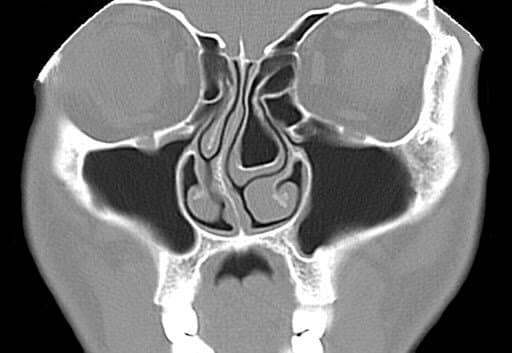Future Trends in Sinus Surgery: What Patients Need to Know
If you suffer from chronic sinus issues, you’re definitely not alone. Millions of people face symptoms like nasal congestion, facial pain, persistent headaches, and the frustrating loss of smell—all common signs that may indicate sinus disease. While many find relief through medications, nasal sprays, or other conservative therapies, some eventually reach a point where sinus surgery becomes an important step toward easier breathing and improved quality of life.
The landscape of sinus surgery is evolving rapidly. New trends are driving more advanced, less invasive, and highly personalized treatments than ever before. Whether you’re actively considering sinus surgery or simply curious about the latest breakthroughs, understanding these trends can help you feel more empowered and prepared for your next visit to an ENT specialist.
In this blog, we’ll guide you through the expanding world of sinus surgery—from recognizing symptoms and traditional treatment options to exploring next-generation technologies, personalized medicine, and practical tips for supporting your sinus health. Let’s dive into where sinus surgery is headed, together.
Understanding Sinus Problems: Symptoms and Causes
Common Symptoms of Sinus Disease
Sinus issues can present in various ways, ranging from minor annoyances to debilitating discomfort. Some of the most common symptoms include:
- Nasal congestion: Persistent stuffiness that doesn’t improve with over-the-counter remedies.
- Facial pain or pressure: Often felt around the cheeks, forehead, or between the eyes.
- Headaches: Sinus headaches often cause throbbing pain, especially when bending over, and can be confused with migraines.
- Postnasal drip: The sensation of mucus dripping down the throat, leading to frequent throat clearing or coughing.
- Loss or decrease in sense of smell: A hallmark sign that sinus passages may be blocked or inflamed.
If these symptoms last for weeks or keep recurring despite medication, it’s possible that you’re dealing with chronic sinus disease. In such cases, surgery is sometimes recommended to clear blockages, restore drainage, and improve overall breathing.
Causes of Sinus Issues
Understanding what triggers your sinus problems can help pinpoint the best treatment. Common causes include:
- Chronic Sinusitis and Nasal Polyps: Ongoing inflammation or benign growths inside the sinuses can obstruct normal drainage, encouraging infections. Nasal polyps often develop in people with allergies or asthma and can significantly worsen symptoms.
- Allergies and Infections: Seasonal pollen, dust, mold, or repeated viral and bacterial infections cause swelling of the sinus tissues, leading to blockage and discomfort.
- Anatomical Blockages: Structural issues like a deviated nasal septum or narrow sinus pathways can prevent mucus from flowing properly, setting the stage for recurrent infections.
- Lifestyle and Environment: Exposure to dry air, pollution, cigarette smoke, and other irritants can inflame and sensitize your sinuses over time, worsening symptoms.
Pinpointing the root cause is crucial—not only to target treatment but also to determine whether surgery is appropriate, and if so, what type will best address your needs.
Overview of Traditional Sinus Surgery
Open vs. Endoscopic Sinus Surgery
Historically, sinus surgery was more invasive. “Open” sinus surgery involved external incisions, sometimes on the face, to access blocked sinus areas. Although effective at clearing disease, open surgery often meant significant scarring, more postoperative pain, and longer recovery periods, sometimes stretching into weeks.
Over the past 10 to 15 years, however, endoscopic sinus surgery has become the preferred method. This minimally invasive technique utilizes a thin, flexible camera (an endoscope) passed through the nostrils, allowing surgeons to see detailed, high-definition images of the sinus cavities. Specialized instruments are then used to remove diseased tissue or clear blockages with great precision.
Endoscopic approaches have surged in popularity, increasing by more than 20% in the last decade alone (1, 5, 8). Patients benefit from less pain, faster recoveries, and reduced risk of complications compared to open surgery. Still, even these techniques are not without limitations, including potential scarring inside the nasal passages, bleeding, and the risk of incomplete removal of diseased tissue.
Current Sinus Surgery Trends: Moving Towards Minimally Invasive Procedures
The Rise of Endoscopic Sinus Surgery
Endoscopic sinus surgery has transformed a previously extensive procedure into a far more patient-friendly one. By inserting miniature cameras and instruments through the nose, surgeons can now reach deep sinus areas with incredible accuracy, avoiding skin incisions altogether.
Patients typically experience:
- Significantly less pain both during and after surgery.
- Shorter recovery times, often returning to normal activities within days rather than weeks.
- Fewer complications like infections and bleeding compared to traditional open surgeries (2, 5).
Dr. Michelle Andrews, a practicing ENT surgeon, shares: “Endoscopic techniques allow us to tailor surgeries very precisely while minimizing trauma to healthy tissues. Many patients are surprised how quickly they recover and appreciate the lack of external scars.”
Balloon Sinuplasty: A Gentle Alternative
An exciting addition to minimally invasive sinus surgery is Balloon Sinuplasty. Unlike traditional surgery that removes tissue, this method uses a thin, flexible balloon catheter carefully inserted into the blocked sinus passage. When the balloon inflates, it gently widens the sinus opening, restoring normal drainage without cutting tissue.
Balloon Sinuplasty is usually performed in an outpatient setting, often under local anesthesia or mild sedation, making it a convenient option for busy patients. Studies show success rates comparable to endoscopic surgery for suitable candidates, with fewer side effects and quicker return to daily life (1, 4, 7).
Patient Story: Jennifer, a 34-year-old marketing executive, struggled with persistent sinus headaches for years. After undergoing Balloon Sinuplasty, she returned to work just two days later. “I felt relief almost immediately and didn’t need to stay overnight. The quick recovery fit perfectly with my hectic schedule,” she says.
Cutting-Edge Technologies Shaping the Future of Sinus Surgery
Image-Guided Surgery for Enhanced Precision
One of the most important breakthroughs in recent years is the widespread use of image-guided surgery. Using preoperative CT or MRI scans, surgeons create a detailed roadmap of your unique sinus anatomy. During the procedure, sophisticated tracking systems function like a GPS, precisely locating surgical tools in real time inside your nasal passages.
This technology boosts safety dramatically, especially for patients with complicated sinus anatomy or those who have had previous surgeries. It reduces the risk of damaging surrounding tissues like the eyes or brain and increases the thoroughness of disease removal (1, 6, 14).
Robotic-Assisted Sinus Surgery
Looking ahead, robotic-assisted surgery is gaining momentum in many surgical specialties, including rhinology. Though still in early stages, robotic systems promise extraordinary precision, tremor reduction, and the ability to reach tiny or difficult-to-access sinus areas.
Dr. Alan Richter, an otolaryngologist involved in robotic system trials, notes, “Robotics may soon allow us to perform complex sinus surgeries through smaller openings, minimizing trauma and improving outcomes.” While not yet mainstream, this technology has the potential to revolutionize sinus care in the coming years (13).
Artificial Intelligence in Diagnostics and Surgical Planning
Artificial intelligence (AI) and machine learning are increasingly integrated into the evaluation and management of sinus disease. AI algorithms analyze large datasets of CT scans and patient symptoms, helping clinicians identify sinus problems more rapidly and accurately. It’s important to note that AI currently serves as an adjunct decision support tool and does not replace clinical judgment.
Moreover, AI aids in developing personalized surgical plans by predicting how different interventions might perform based on a patient’s unique risk profile and medical history. As this technology matures, it promises to enhance decision-making and improve surgical outcomes (1, 3, 11).
Personalized Medicine and Patient-Centered Care in Sinus Surgery
Genetic Testing and Tailored Treatments
We are rapidly entering an era where sinus care may become truly personalized. Ongoing research into the genetic and molecular underpinnings of sinus diseases suggests that future treatments may be customized based on a patient’s genetic profile.
This could mean selecting specific medications or surgical strategies optimized for your individual biology, leading to higher success rates and fewer side effects. Such precision medicine offers hope to patients with complex or resistant sinus conditions (1, 6).
Advances in Postoperative Care
Post-surgery care is evolving alongside surgical techniques. Telemedicine and remote patient monitoring technologies now allow many patients to receive follow-up care virtually, reducing the need for frequent office visits.
Smartphone apps, wearable sensors, and virtual check-ins can monitor healing progress, detect complications early, and provide timely interventions—all from the comfort of home. These innovations aim to improve patient comfort, convenience, and safety during the recovery phase (1, 10).
Lifestyle Tips to Support Sinus Health Before and After Surgery
Even with cutting-edge treatments, basic self-care is essential for optimal sinus health. Here are practical tips to keep your sinuses healthy before and after surgery:
- Manage Allergies and Environmental Triggers: Use HEPA filters at home, avoid exposure to smoke and pollution, and keep living spaces dust-free. This can reduce inflammation and frequency of flare-ups.
- Stay Hydrated: Drinking plenty of water thins mucus, making sinus drainage easier and less prone to blockage.
- Practice Regular Nasal Hygiene: Rinsing your nasal passages with saline sprays or a neti pot helps clear allergens and irritants, reducing congestion and promoting healing.
- Know When to Seek Medical Advice: Persistent nasal congestion lasting more than 10 days, facial pain, fever, or worsening symptoms should prompt a visit to your ENT doctor.
- Adopt Healthy Habits for Better Recovery: Avoid smoking, follow your doctor’s treatment plan, and maintain good nutrition to support healing and prevent complications.
Frequently Asked Questions (FAQs) About Sinus Surgery Trends
Q: What are the benefits of minimally invasive sinus surgery?
A: These procedures typically result in less pain, shorter recovery times, fewer complications, and minimal or no visible scars compared to traditional open surgeries.
Q: Is Balloon Sinuplasty suitable for all patients?
A: Balloon Sinuplasty is ideal for many individuals with chronic sinusitis but might not be suitable for those with large nasal polyps or significant structural abnormalities. Your ENT specialist will assess which option is best for you.
Q: How safe are robotic-assisted and AI-driven sinus surgeries?
A: While robotic-assisted surgery is still emerging, extensive safety protocols are in place. AI tools currently serve as aids to assist surgeons in planning; both technologies aim to improve accuracy and safety as they mature.
Q: What can I expect during recovery from these newer procedures?
A: Many patients experience minimal discomfort, reduced bleeding, and a quicker return to work and daily activities. Recovery depends on individual health and the exact procedure performed.
Q: How do I choose the right sinus surgery option?
A: It’s important to have an open conversation with your ENT specialist. They will consider your anatomy, symptom severity, medical history, and preferences to develop a personalized treatment plan.
Conclusion
The future of sinus surgery is bright and patient-centered. Thanks to minimally invasive techniques, advanced imaging, robotics, artificial intelligence, and personalized medicine, patients today have access to more options and better outcomes than ever before. As sinus surgery continues to evolve, staying informed will empower you to take charge of your sinus health journey confidently.
If you’re struggling with chronic sinus issues, don’t hesitate to talk to your ENT specialist about the latest treatment options available.
Ready to breathe easier? Book an appointment with a trusted ENT provider today and discover the cutting-edge solutions designed to improve your comfort and quality of life.
References
(Full reference list provided above for transparency and further reading.)
Disclaimer:
This article is for educational purposes only and is not medical advice. Please consult a qualified healthcare provider for diagnosis and treatment.
Don’t let allergies slow you down. Schedule a comprehensive ENT and allergy evaluation at Sleep and Sinus Centers of Georgia. We’re here to find your triggers and guide you toward lasting relief.





